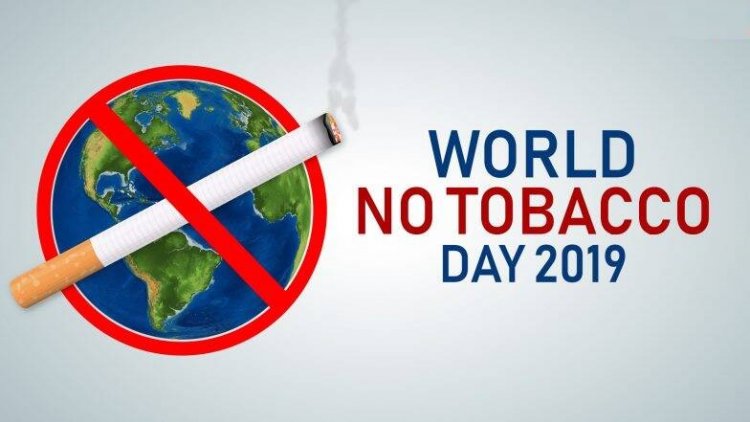50-60% smokers suffer from COPD

- Smoking is recognized as the most important causative factor for COPD
- Smokers who experience smoker’s cough or lack of stamina should immediately visit the doctor
- Smoking cessation therapy and pulmonary rehabilitation can be helpful to deal with COPD
Chronic obstructive pulmonary disease (COPD) is a progressive and debilitating lung disease, which means the condition worsens over time. The disease causes coughing, wheezing, and shortness of breath. Various factors contribute to COPD, including prolonged exposure to air pollutants and dust. However, cigarette smoking is far and away from the leading cause of the disease. City experts advise that the most effective available treatment for COPD is smoking cessation.
According to the World Health Organization (WHO), tobacco-related deaths are projected to increase to 8.3 million deaths per year by 2030. The primary cause of COPD is tobacco smoke (including second-hand or passive exposure). This includes smoke from cigarettes, cigars, and pipes as well as secondhand tobacco smoke exposure. One is exposed to secondhand smoke when he/she breathe near someone who’s smoking.

COPD is rapidly becoming a global public health crisis with smoking being recognized as its most important causative factor. Speaking about the Indian scenario, according to the Global Adult Tobacco Survey 2 (GATS 2) of 2018, 232.4 million adults in India use tobacco daily. Hence, it is essential for smokers to take charge of their health and keep COPD at bay.

Dr. Rajratan Sadawarte, Chest Physician at Kohinoor hospital said, “50-60% smokers who visit me, have COPD. It is the leading cause of death due to smoking, and the life expectancy of a smoker is 60 years. Also, chemical factory workers who are exposed to chemicals and smoke, and rural women blowing into a chulha, can get COPD. According to the Body mass index, airflow Obstruction, Dyspnea and Exercise capacity (BODE) for COPD Survival Prediction, if one smokes 20 cigarettes a day for 20 years, he/she can get COPD. It is a partially reversible disease and early warning signs of it are difficulty in walking, breathlessness, and cough. The patients tend to visit the doctor when their COPD becomes severe. They may be admitted in the ICU, can suffer from phenomena or may require oxygen therapy at home. Thus, smokers with COPD are advised to opt for pulmonary rehabilitation which is a supervised program that includes exercise training, health education, and breathing techniques.”

Dr. Arvind Kate, Pulmonologist, Zen Multispecialty Hospital, said, “10-12% smokers, who visit me, suffer from COPD. Cigarette smoke (nicotine smoke) causes disturbances in the protective layer of our respiratory passage referred to as mucosa. It irritates the breathing pipe or breathing tubes by causing excessive flem production which will result in coughing, swelling of the windpipe and breathlessness and this is referred to as COPD. Long term smoke exposure damages the air exchanging unit referred to as alveoli of the lung. Then, the patient will develop long-standing COPD or emphysema. There are 2 types of COPD, one is bronchitis in which the patient predominantly experiences coughing and the other one is emphysema wherein one encounters breathlessness. There are genetic variants for the development of COPD, and all the smokers may not suffer from COPD. Smokers who experience smoker’s cough or lack of stamina should immediately visit the doctor as it can be the warning signs of COPD. Also, COPD patients are at the risk of other problems like hypertension, ischemic stroke, heart disease, lung cancer, and respiratory failure, due to which their life expectancy can go down if they continue to smoke.”
“A smoker is asked to undergo pulmonary function tests (PFTs) so that they get to know about the certain disturbances or abnormalities which occur due to smoking as their lung capacity goes down. If the COPD patient continues to smoke then problems like coughing and breathlessness will not come under control, despite taking regular medications. Hence, smokers diagnosed with COPD are advised to enroll themselves for smoking cessation therapy (the process of discontinuing tobacco smoking). Counseling, behavior therapy, medicines, and nicotine-containing products, such as nicotine patches, gum, inhalers, and nasal sprays, may be used to help a person quit smoking, along with medications recommended by the doctor. Moreover, monitoring the lung functioning regularly, taking a vaccine to prevent infections, doing yoga and breathing exercises can enhance one’s lung function,” concluded Dr. Kate.

Dr. Unmil Shah, Pulmonologist at Global Hospital Parel, Mumbai, said, “Lung health is an important concept and applies to each and every individual. Mere breathing exercises are not going to be sufficient to maintain it. As they say ‘Prevention is better than Cure’, it is important on us as a society to understand risks of tobacco exposure on health. Parents have to understand and also make sure children have explained the risks of tobacco exposure. Quitting tobacco also requires socio-emotional support apart from various pharmacological steps required for smoking cessation. There is a need to have more dedicated smoking cessation clinics to help quit smoking. It is imperative for schools to teach ill effects of Tobacco through various communication mediums. Policy makers also need to understand the menace of Tobacco addiction and its implication on health and frame strategies to support quit tobacco campaign for better future and health. Multi-pronged the approach is the best way ahead to curb the menace of Tobacco.”















































